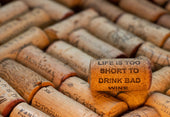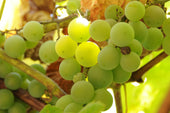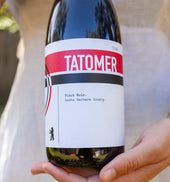
Zinfandel: An Immigrant Story

The history of the Zinfandel grape has all the elements of a great novel: the drama and intrigue of an immigrant’s journey and the ups and downs of fame and fortune, all culminating in a popular resurgence that led to a 21st century search for the grape’s origin.
GOLD FEVER: The Zinfandel grape hitched a ride with migrants travelling to California in search of wealth during the Gold Rush of 1849 and was met with almost immediate success. It grew vigorously in the semi-arid foothills, yielding large, tightly-clustered fruit. The vines did not require stakes or trellises and were head-pruned each season, resulting in the classic gnarly-looking trunks associated with most old-vine Zinfandel vineyards. More importantly, it made a hearty beverage for the hardworking miners. By the end of the 1800s, Zinfandel was growing widely across California.
Zinfandel is a survivor. It was among the first vines to be grafted to resistant root stock when the phylloxera aphid wiped out the vineyards in Europe. It’s popularity actually increased during Prohibition when alcoholic beverages could not legally be transported. Zinfandel growers just shipped their grapes nationwide for home winemaking instead.
After Prohibition, Zinfandel’s popularity waned. Winemakers ripped out the vines to make room for varietals that had a known European heritage. It wasn’t until the 1970s, when White Zinfandel blazed onto the scene, that the grape made its comeback. White Zin’s incredible popularity encouraged growers to hold onto their old Zinfandel vineyards, thus preserving them for years to come.
ORIGIN OF THE SPECIES: As Zinfandel regained prominence, winemakers pondered where it came from—it seemed to have no European equivalent. Was it from the Austro-Hungarian Empire or perhaps related to Italy’s Primitivo grape? The answer was found when the Zinfandel Advocates and Producers (ZAP) teamed with UC Davis to sleuth out the truth.
Zinfandel is related to Italy’s Primitivo grape, but that’s not its true origin. Primitivo came to Italy in the late 1700s from Dalmatia, which later became a part of the Austro-Hungaran Empire and is located in modern-day Croatia. In 2001, Scientists from UC Davis traveled to Kaštela, Croatia and discovered a small cluster—just 9 plants—of Crljenak kaštelanski grape vines. The DNA of this nearly-extinct grape turned out to be the long lost parent of Zinfandel.
OLD VINE ZIN: This description is generally applied to Zinfandels made from vines 50 years or older. While rare, vineyards planted between 50-150 years ago exist all across California and winemakers compete to make complex Zinfandels from these exclusive grapes.
Bottle Shop’s Easton Amador County Old Vine Zinfandel is made in California’s oldest Zinfandel-producing region: the Sierra Foothills. Winemaker Bill Easton crafts this vintage from 20- to 80-year-old vines growing in the brick-red soil of the foothills. This Zin reflects its origins with its black-fruit flavors, big tannins and long finish.
Vineyards from the late 1800s still exist in Napa and Sonoma counties. In 1883, Zinfandel was first planted at what is now Storybook Mountain Vineyards in the Mayacamas area of Napa County. Established by Adam Grimm with the help of his brother, Jacob (yes, those Grimm brothers), the site was renamed in the 1960s to reflect it’s fairytale background. Storybook’s “Mayacamas Range” Napa Valley Estate Zinfandel reflects the character of the vineyard’s microclimate with its layered, earthy aromas and zesty red fruit.
Dashe Cellars’ “Vineyard Select” Zinfandel takes its grapes from several old vineyards one valley to the west in Dry Creek, including the 90-year-old historic Lovau and Lily vineyards. This spicy Zinfandel boasts notes of blackberry and cherry fruit with a long finish. It’s food-friendliness is characteristic of Dry Creek Zins.
Carol Shelton’s “Monga” Zin Cucamonga Valley is sourced from a fragment of vineyard in Rancho Cucamonga that was planted in 1918 to grow “packing grapes” for home winemaking. This vineyard has survived desert-like growing conditions for 100 years, and more recently, urban sprawl. The stunted vines have a low-yield of small fist-sized clusters. The resulting Zinfandel reflects that struggle with notes of spice, a concentrated bright cherry and dried cranberry flavor, and strong tannins.
AN IMMIGRANT STORY: Joel Peterson, co-founder of ZAP puts it best: “Zinfandel is considered America’s Heritage grape because, like most of us, it is an immigrant that was displaced from its home and migrated to California where it thrived.”
 Patty Lyn Tweten is a writer, graphic designer and vineyard owner. She is also a devoted fan of rosés having helped her husband make their own with the sagniée method. Instagram Linkedin
Patty Lyn Tweten is a writer, graphic designer and vineyard owner. She is also a devoted fan of rosés having helped her husband make their own with the sagniée method. Instagram Linkedin


















































